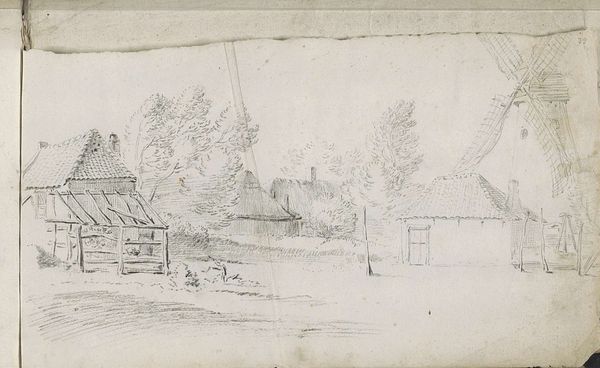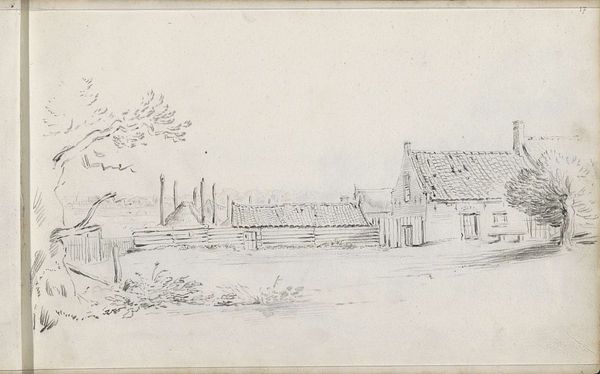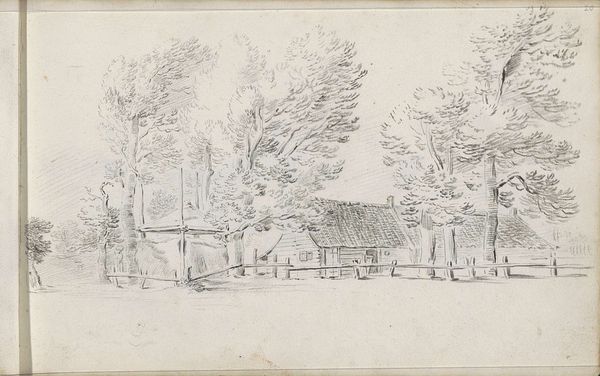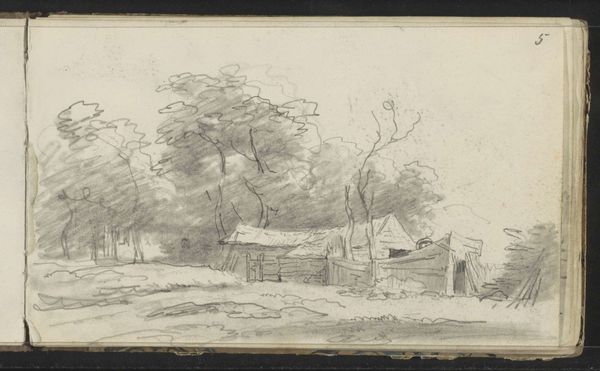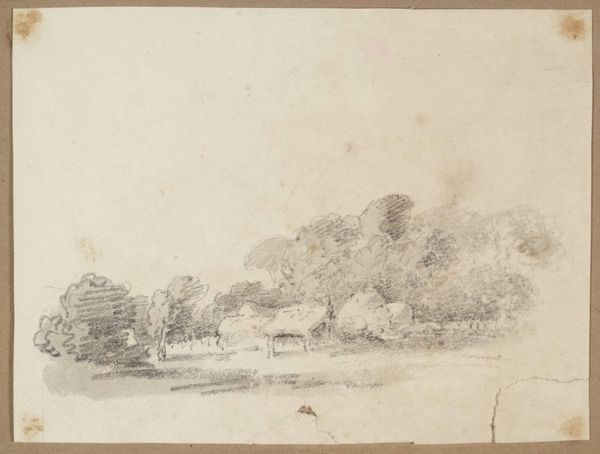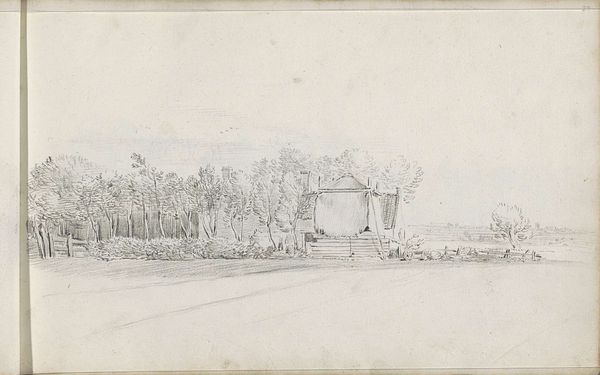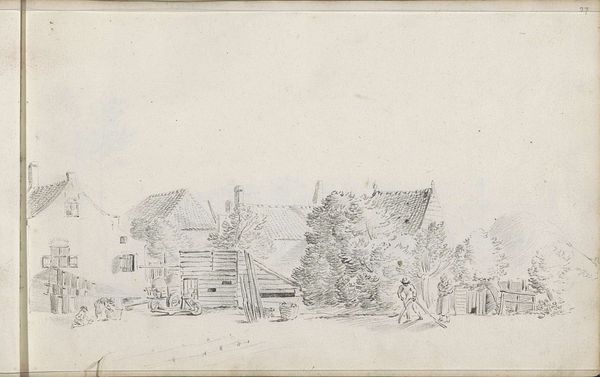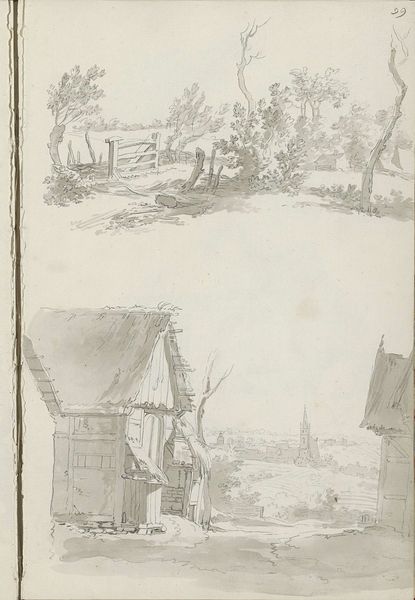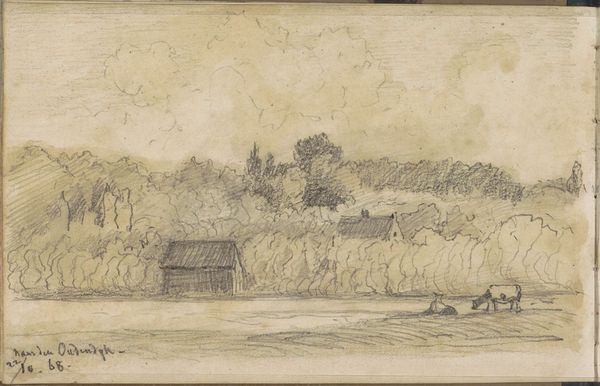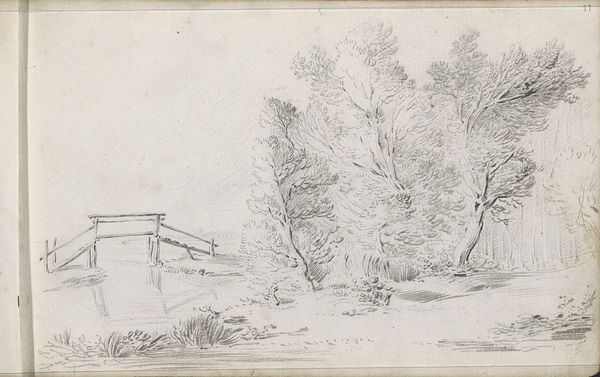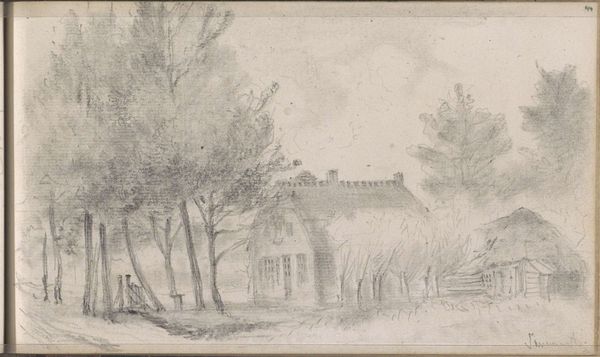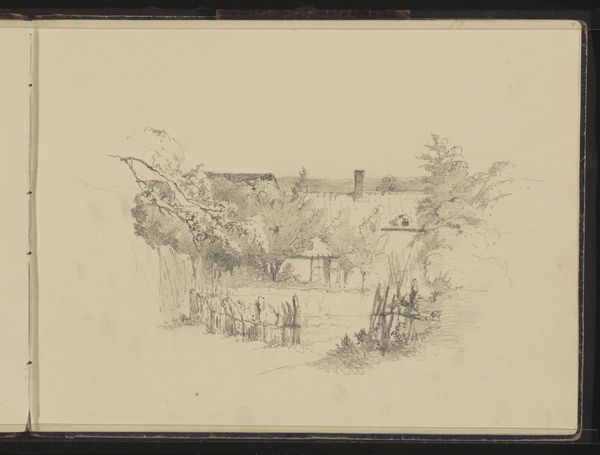
drawing, paper, pencil
#
drawing
#
dutch-golden-age
#
pencil sketch
#
landscape
#
paper
#
pencil
#
realism
Copyright: Rijks Museum: Open Domain
Curator: This drawing is called "Boerderij met een schuur en hooimijt", which translates to "Farm with a Barn and Haystack", created around 1645-1646 by Pieter Moninckx. It's a pencil sketch on paper. Editor: It looks like a memory, doesn't it? A fleeting capture. I immediately notice the way the building’s structural logic is clearly depicted despite the looseness of the technique. Curator: Exactly. I find the placement of that single large tree on the left, contrasted by the strong rectangular form of the barn, fascinating. It sets up a lovely tension between organic growth and human construction, mirroring perhaps, our own relationship to the landscape. Editor: The texture is captivating too. Look at the layers of pencil lines, almost vibrating, constructing the form. The labor is almost palpable; one can sense the artist's hand carefully and precisely recording this structure and its immediate setting. The rough texture really stands out. Curator: Yes, the use of pencil is quite skillful in depicting light and shadow. There's a definite emphasis on the barn's materiality, the logs composing its walls, making the structure feel almost weighty. I wonder if the structure had particular symbolic significance. Was it Moninckx’s own farm, a depiction of economic success? Editor: Or, maybe a subtle social commentary through its construction. Who would have built such a structure? How does this seemingly mundane image speak to labor practices? A farm scene tells stories far beyond just bucolic bliss, doesn't it? Curator: Absolutely, and those socio-economic threads intertwine with deeply symbolic meaning— the hay might have indicated fertility, hope, or resilience. Editor: Indeed, even simple scenes hold complex layers of historical insight. The choice of such rudimentary material—pencil on paper—also offers insight into what could and would have been preserved, and by whom, at this point in history. Curator: Considering how Moninckx uses familiar landscapes as powerful visual testaments certainly allows a deep understanding of not only history, but cultural continuities. Editor: It highlights how, even within modest materials, potent statements regarding the relationship between people, labor, and the built environment can emerge.
Comments
No comments
Be the first to comment and join the conversation on the ultimate creative platform.
